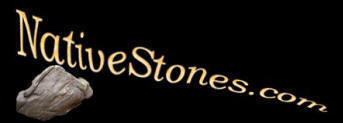|
Native American Wells
Native wells serve as entrances into Mother
Earth. Found frequently in southern New England, they are
closely related to the sipapus associated with Anasazi and
Puebloan kivas. While the sipapus of the Southwest are
built into the floor of the kivas (which are analogous to the
chambers and foundations of the Northeast), the Northeastern
wells almost always are located external to the chamber or
foundation. Normally within 100 feet of the
chamber/foundation, the well is generally on either a cardinal
or solstice alignment from the chamber entrance or the nearest
corner of the foundation. Sometimes multiple wells are
found, generally two. Mystery Hill in New Hampshire, for
example, possess two wells in the southern part of the complex.
Horizontal shafts have been noted which begin around 10 feet
below the surface. Northeastern wells can be 25 or more
feet deep, and are almost always circular, around 2.5 feet in
diameter.
Below are three accounts of ancient
Connecticut Native wells:
John W. Barber, Connecticut Historical
Collections 1838 (p.78):
"At Bissell's ferry [in East Windsor], near the mouth of the
Scantic river, is a well which is supposed to have been
made before any English settlements were attempted in
Connecticut. The lower part of the well is walled by stones hewn
in a circular manner, and the manner in which they are laid
together is believed to be entirely different from that in which
any Englishman would lay them - there remains no traditions
respecting the time, or the persons by whom this well was
constructed."
F. M. Caulkins, History of New London, 1860;
p. 69n:
"If conjecture be allowed, we should fix the site [of Rev.
Blinman's house on Meeting House Hill on the north side of
Granite St.] on the slope of the hill upon the northwest side,
nearly opposite Richard Post's lot, where is yet remaining an
ancient well on the street side."
F. Glynn, Excavation of the Pilot's Point
Stone Heaps; Archaeological Society of Connecticut Bulletin 38;
1973; p.79:
"A well of colonial or
later origin exists on the western slope of the Point.
This well is said to have been used by coastal schooners for taking on water. Hurricanes
"Carol" and "Edna" in 1955 washed out soil on the northern
slope, disclosing a hitherto unknown well. It's top is
washed by average high tides. It may be of Indian origin."
[Not only is it probable this well is Native, but the rise in
sea level since its construction hints at a great age.]
|

